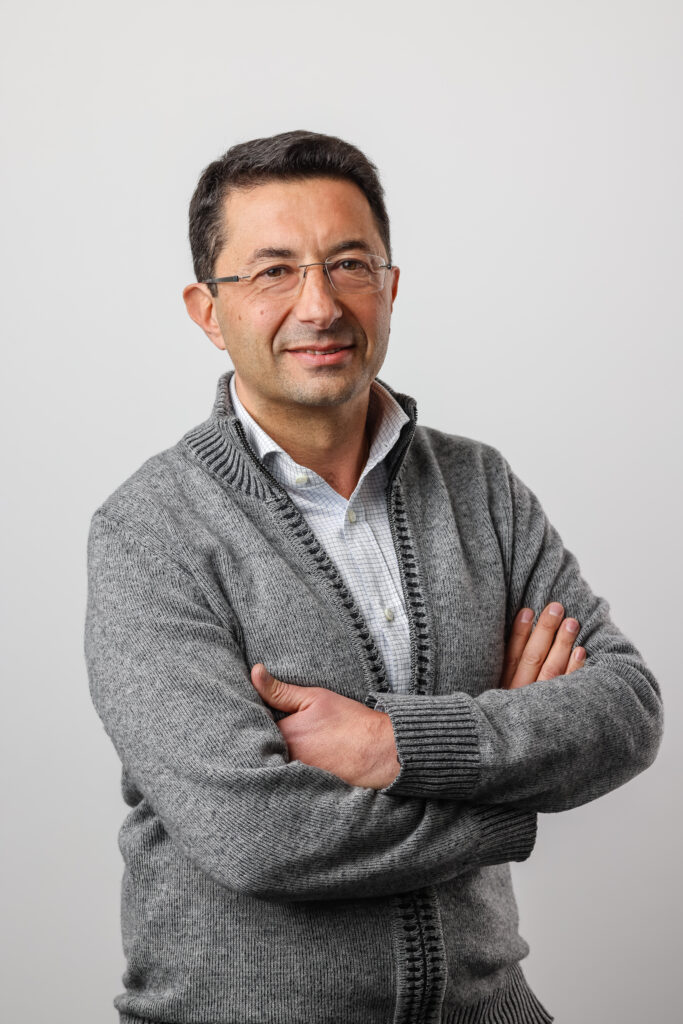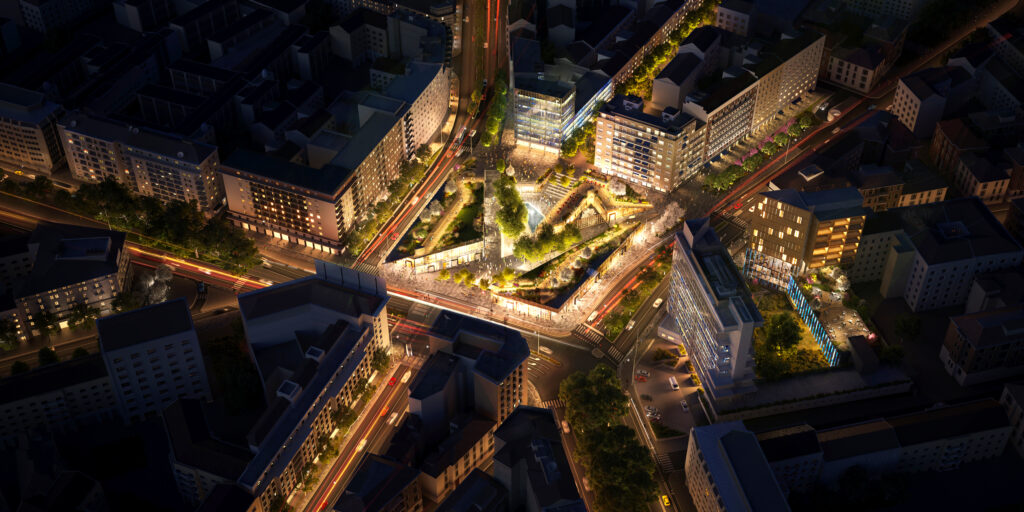Milan, 2026. Exiting the Loreto underground station, you are almost delivered into the embrace of the square, which - excavated in the form of a hypogeum, in natural stone - descends to the mezzanine level to carry you up to the open sky, where, looking up, you discover the green rooftops of three buildings: prismatic structures equipped with solar panels and discreet containers for shops, while outside a network of pedestrians and cyclists moves among three hundred trees, a place of passage and meeting. This urban regeneration covers more than nine thousand square metres, including almost four thousand square metres of public green space and more than one kilometre of cycle paths in the entire project. Back to Milan, 2023. This vision is - in short - the design of the new Piazzale Loreto, winner of the international competition Reinventing Cities. Entitled LOC - Loreto Open Community, it is scheduled to start construction by autumn 2023 with the aim of completion for the Milano-Cortina 2026 Winter Olympics, and is based on the idea of a piazza that is open to people and ideas. We spoke to Alumnus Carlo Masseroli, Development&Strategy Director of Nhood, an international real estate solutions company specialising in commercial real estate and urban regeneration - the leader of a multidisciplinary team that includes some of the best in the fields of planning, design and landscape.

The project is divided into four stages, which over time and in various ways foresee dialogue with the community. For us, it was essential to start by listening to the local community, which does not mean neutralising potential neighbourhood committees or being careful not to touch on issues that could have generated opposition. We needed to present the project and understand with the local people themselves whether it was consistent. So, in the first listening stage it immediately emerged that there this square still retains a strong legacy of the boom in the car industry, when a different notion of the city transformed it not into a meeting place but a place of division. So much so that Piazzale Loreto separates parts of the city that are profoundly distant from one another. There is no other place in the city where, standing at the centre and looking around, you can see so many different Milans: there is NoLo, which is enjoying a new vitality generated thanks to the local residents, but which, compared to Corso Buenos Aires, for example, began with fewer services. On the opposite side we have Corso Buenos Aires, the wealthiest part, the shopping area. Continuing in line from here, we have Viale Monza and the multicultural Via Padova. And then there is Città Studi, the university district. In short, it is a road junction that from a social point of view has created a barrier to sharing the city. We want to tear down this barrier. Hence the idea for a project that is not monumental and architectural in nature - which it was originally - but which transforms the square into a place that reunites many different parts of the city. An agora, a meeting point.
Yes, and this is the stage we are in now. LOC 2026 will start hosting initiatives and events that will anticipate what we would like to see in the square. We will also organise a series of meetings for students at the Politecnico di Milano, to explain the various stages and also hear their point of view on the project. Likewise, we will meet with other local schools and actors to explain the many aspects of the project, from mobility to the environment. Regarding the environment, during my tenure as councillor for spatial development (2006-2011, ed.) we had envisaged the theme of ‘green spokes’ in the city, that is an orbital park made up of cycle paths and nature that would encircle the city, running from the centre to the suburbs. Piazzale Loreto will represent one of these green spokes. Returning to the origin of the core of this idea, I would like to add that the first milestone of this square was the construction of the working team. When the Reinventing Cities call was launched, I was at Arcadis, a design and engineering consultancy, and I wanted to build a team capable of meeting a major challenge: a private entity that for the first time transforms a public square, an emblem of regeneration that combines public interest and private viability. So we engaged Nhood, which specialises in transforming spaces into living places, the Metrogramma team of architects and MIC-HUB for public and private infrastructure mobility.


On the one hand, there is enormous fear because the expectation is high. And we could envisage meetings dedicated precisely to discussing and preserving the history of this square. No one from my generation has ever set foot in the centre of this square and this will be a great new element: in the square of the future, the entire area will be open to pedestrians. From a mobility point of view, the impact is very low because we create order but without restrictions. We will reduce traffic by 5 %, but we believe that the construction period - which will be the third stage - will naturally lead to a new way of using this part of the city. Finally, and we come to the fourth stage, our ambition is that this square, like the large squares in other capital cities, becomes one of the places on Milan’s tourist tours.

After graduating in management engineering, I opened a company dealing with management control information systems. Subsequently, I was councillor for urban planning in Milan for five years, playing a public role focused on urban regeneration. Then, as general manager of MilanoSesto, I have played the role of a private individual and today part of my job is precisely to make sure that public interests match and dialogue with private interests and viability. This preamble serves to emphasise how I started working using the management skills I learnt at university but then did something else. More than vertical skills, what remained was a learned method, the ability to tackle any complex issue, to process any kind of problem. In a dramatically changing world, I have the toolbox I created at the Poli. The other lesson learned is the tendency always to provide a quantification. To maintain a pragmatic approach. Especially in the world of urban regeneration, where all kinds of very complex competences are combined and you need to be able to condense things: quantify the process, give a sense of concreteness to the things you are managing. In a nutshell: put things into numbers.
For me, the centre of Piazzale Loreto is the most unreachable place for the people of Milan, almost a utopia. Being able to walk in that place and making it usable for everyone is, I think, a good symbolic goal. There, in the shade of a sunny day, I would like to toast the new square.